 Author: Eiji OKUBO Sales Network: Amazon.com / Amazon.co.jp |
| Written by Eiji Okubo, Printed books and e-books Heritage of Minoan and Mycenaean civilizations Detailed data on Ruins and Excavated items |
| The World of Crafts and Arts of the Mycenaean Civilization "Gold & Silver and Jewelry" |
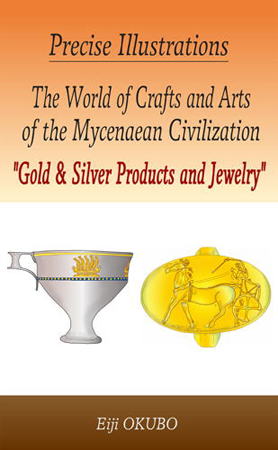 |
| subtitle: Data and explanations of excavated items language: English format: e-book / Web-download to Amazon-kindle, PC, e-book-reader, tablet-device, mobile-phone size: 341 pages (kindle screen) / capacity: 464Mb sales: Amazon Network / Amazon.com / Amazon.co.uk |
| Sumary: This e-book is a "Precision Illustrations & Data Book" of excavated items from the prehistoric Mycenaean Civilization ruins in the mainland Greece. This e-book is picked up 180 items of outstanding Mycenaean Gold & Silver Products and Jewelry excavated from important ruins of the Mycenaean Civilization in the Argolis, Messenia, and Laconia regions, including the Mycenae Palace and surroundings ruins, which were the center of the Mycenaean Civilization. More than 90% of the excavated items explained are depicted in Precise Illustrations, and the rest are shown in Photographs. This e-book will invite you to the "World of Crafts and Arts" of the Mycenaean Civilization through carefully selected important works from among the excavated items on display at the National Archaeological Museum of Athens and other archaeological museums throughout the Peloponnese. Contents: I What is the Mycenaean Civilization? II Gold Products / Cup III Gold Products / Signet Ring IV Gold Products / Death Mask, Breast-plate, Diadem V Gold Products / Necklace, Earrings, Hairpin VI Gold Products / Accessories, Sheet processed products VII Silver Products VIII Semi-precious stones, Glass paste, Bronze Jewelry Products |
| Sample Page:(excerpt) ---------- Many cups are decorated on the sides with embossed depictions of bulls, leopards, and marine creatures such as dolphins, which were influenced by the naturalistic Minoan civilization in Crete. In addition, in terms of handles of the gold cup, a simple loop-curving ring-handle that is unique to the Mycenaean civilization, and Vaphio style handles were particularly used. As is also common with silver cups, some gold cups with elaborate granulation technique on the rim/mouth, have also been found. II-01 Gold Goblet 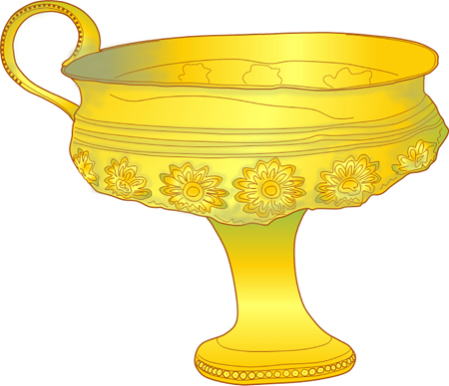 Site: Shaft Grave IV, GCA, Mycenae Palace Shape & Decoration: Gold Goblet with ring-handle rosettes in repoussé, granulation technique Era: LHI, ca. 1550 Museum: NAM, inv. No. 351 Local: Argolis, Peloponnese / 11km north-northwest from Argos city 90km west-southwest from Athen Drawing: Eiji OKUBO II-02 Gold Cup 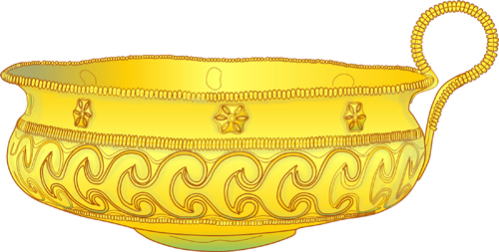 Site: Chamber Tomb 10, Dendra Shape & Decoration: Gold Cup, ivy & rosette patterns, granulation technique Era: LHIIIA1, 1400-1375 BC Museum: NAM, inv. No. 8743 mouth diameter D130mm, H50mm excluding handle Local: Argolis, Peloponnese / 7km north-northeast from Tiryns Palace Drawing: Eiji OKUBO GPS: 37°39'24''N 22°49'32''E / ALT 60m II-03 Vaphio style Gold Cup (1) 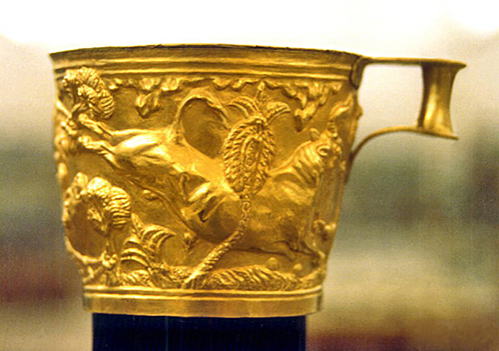 Site: Royal Tholos Tomb, Vaphio Shape & Decoration: Gold Cup in Vaphio style rampaging bulls & young man trying to catch in repoussé Era: LHIIA, 1500-1450 BC Museum: NAM, inv. No. 1758 / mouth diameter D108mm Local: Laconia, Peloponnese Photo: 1982 II-04 Vaphio style Gold Cup (2) 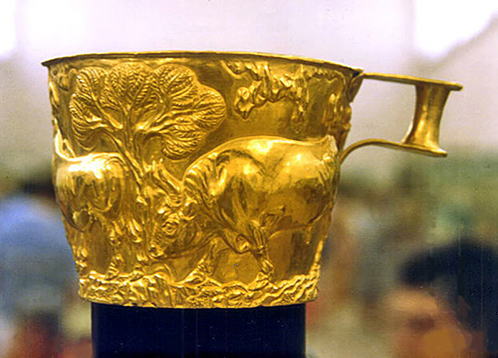 Site: Royal Tholos Tomb, Vaphio Shape & Decoration: Gold Cup in Vaphio style quiet bulls that have been subdued in repoussé Era: LHIIA, 1500-1450 BC Museum: NAM, inv. No. 1759 / mouth diameter D108mm Local: Laconia, Peloponnese Photo: 1982 Among researchers, this gold cup has become a model for prehistoric metal vessels and pottery styles, and is called the “Vaphio style Cup” due to its exquisite design and appearance. Related: Royal Tholos Tomb, Vaphio 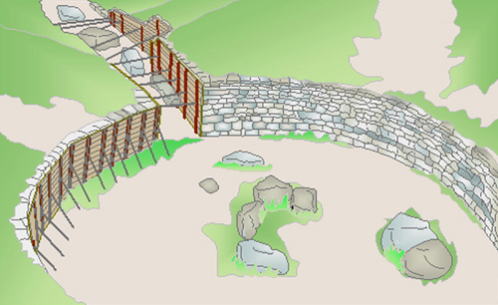 Site: Royal Tholos Tomb, Vaphio (as of 1982) Situation: Mycenaean Tholos Tomb inner diameter 10m, remaining wall height 1.6m Era: LHIIA, 1500-1450 BC Local: Laconia, Peloponnese / 7km south-southeast from Sparti city Drawing: Eiji OKUBO GPS: 37°01’13’’N 22°28’04’’E / ALT 195m III-01 Gold Signet Ring, “Golden Treasure of Acropolis” In particular, on gold signet rings, the carvings of goddesses, shrines, and sanctuaries, which can be said to be the inheritance or imitation of expressive motifs from the Minoan civilization, are remarkable and one or more curved sacred trees always grow there. Out of faith that blessings will be given that if they touch the branches and leaves of shrines and sanctuaries, not only the goddess but also Mycenaean youths and noble women with their hands reaching out to the branches and leaves were carved on them. In addition, the motif of the gold signet ring emphatically engraved with divine elements such as the goddess is called “Epiphany expression.” In some of gold signet rings, there are motif works that depict one or more goddesses watching over some kind of ceremony or sacred scene, or that goddesses wear luxurious and distinctive thick skirts originating from the Minoan civilization and flowers are scattered around them. We understand, in the divine motif expression of the gold rings, that noble people of Mycenae favored the goddess as well as the sacred animals griffin and sphinx. In addition, there are multiple scenes of lions which were symbols of the strong, and breastfeeding of familiar animals such as goats and cows. 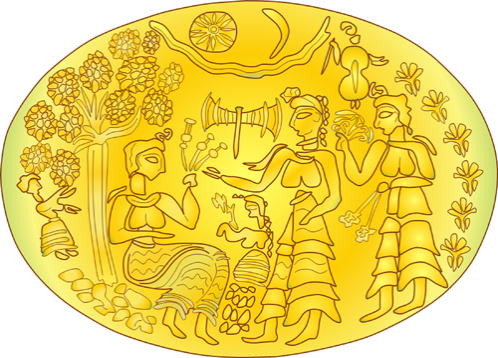 Site: House of the Great Ramp, Citadel, Mycenae Palace Shape & Decoration: Gold Signet Ring, “Golden Treasure of Acropolis Mycenae” Epiphany: six goddesses, double axe, shrine with sacred tree, Sun and crescent moon, flowers Era: LHIIA, 1500-1450 BC Museum: NAM, inv. No. 992 / L34mm, W25mm Local: Argolis, Peloponnese Drawing: Eiji OKUBO III-12 Gold Signet Ring, “Treasure of Aidonia” 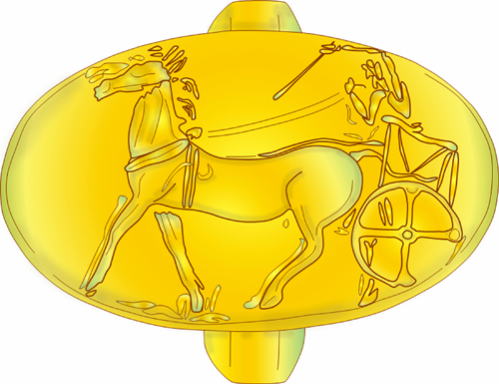 Site: Chamber Tomb 7, Aidonia, near Nemea Shape & Decoration: Gold Signet Ring, “Treasure of Aidonia,” two-wheeled chariot and a man Era: LHI-LHII, ca.1500 BC Museum: NEAM, inv. No. 1005 / L33.5mm Local: Corinthia, Peloponnese / 20 km northwest of Mycenae Palace Drawing: Eiji OKUBO IV-01 Gold Death Mask, “Gold mask of Agamemnon”  Site: Shaft Grave V, GCA, Mycenae Palace Shape & Decoration: Gold death mask, in repoussé Excavator J.H. Schliemann's conjecture: “Gold mask of Agamemnon,” 13th century BC scholar's judgment: Death-mask of a "King" over 300 years older than King Agamemnon Era: LHI, ca. 1550 BC Museum: NAM, inv. No. 624 / H250mm, weight 168.5g Local: Argolis, Peloponnese Photo: 1987 V-09 Gold Earrings  Site: Shaft Grave III, GCA, Mycenae Palace Shape & Decoration: Gold Earrings, chained plant petals, fine granulation technique Era: LHI, 1550-1500 BC Museum: NAM, inv. No. 61 / outer width L76mm Local: Argolis, Peloponnese Drawing: Eiji OKUBO VI-15 Gold Ornaments, “Lion Cub” motif 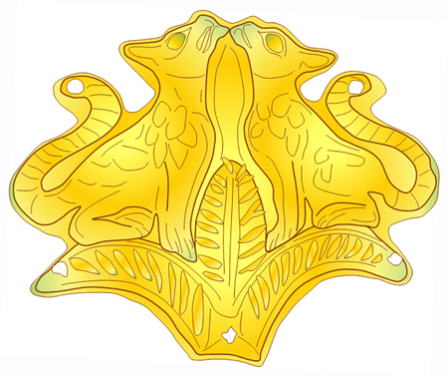 Site: Shaft Grave III, GCA, Mycenae Palace Shape & Decoration: Gold Ornaments, processed gold sheet two lion cubs facing each other on palm leaves in repoussé Era: LHI, 1550-1500 BC Museum: NAM, inv. No. 50 / L40mm, W34mm Local: Argolis, Peloponnese Drawing: Eiji OKUBO Related: Lion Gate, Mycenae Palace 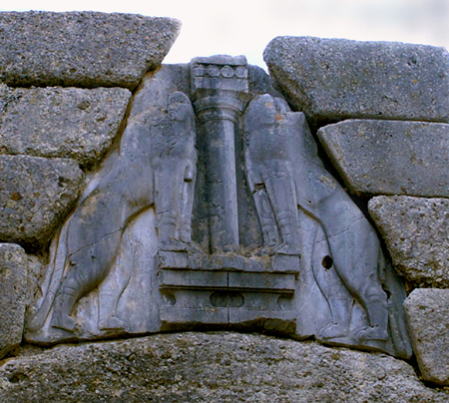 Site: Lion Gate, Mycenae Palace Situation: Limestone Relief, two Lions facing each other on the Lintel stone lion height approx. 90cm, original head=made of metal (bronze?) not currently exist Era: LHIIIB, ca. 1250 BC Local: Argolis, Peloponnese Photo: 1996 Among the silver cups and rhytons excavated from the Mycenae Palace area and surrounding ruins, splendid works have been found inlaid with sacred bull heads, chains of ivy leaf pattern, and the heads of Mycenaean soldiers. Furthermore, there are gold-plated silver cups, small silver jars inspired by ceramic patterns, the sacred silver rhyton cup with a bull head inherited from the Minoan civilization, and the sacred figure 8-shaped like an open bivalve. The silver rhyton cup depicting some animals was also unearthed. VII-01 Silver Goblet, Decoration of fine Inlay technique 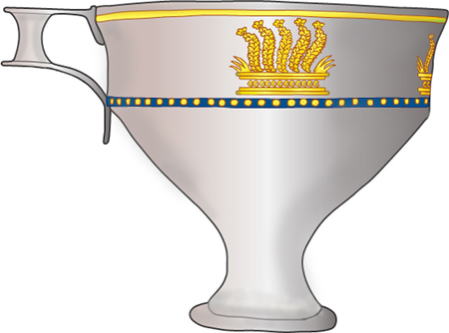 Site: Shaft Grave IV, GCA, Mycenae Palace Shape & Decoration: Silver Goblet, elaborate fine inlay technique fern leaves (or flower baskets), horizontal gold line, stippling gold on niello line Era: LHI, ca. 1550 BC Museum: NAM, No. 390 / H155mm Local: Argolis, Peloponnese Drawing: Eiji OKUBO Related: Minoan Ephyrean style Goblet 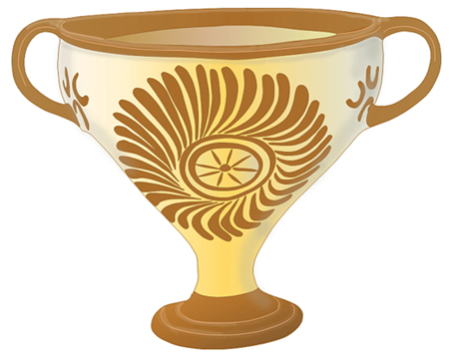 Site: Temple Tomb (Royal Tomb), Minoan Knossos Palace Shape & Decoration: Ephyrean style Goblet Abstract and Geometric design, curved petal pattern Era: LMII, 1450-1400 BC Museum: HAM, inv. No. 9062 / H150mm Local: Central North, Crete / 630m south from Knossos Palace Drawing: Eiji OKUBO GPS: 35°17'32.50''N 25°09'51.50''E / ALT 105m VII-05 Silver Cup, Granulation and Inlay in Gold & Niello 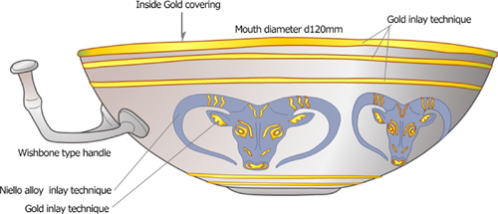 Site: Royal Tholos Tomb, Dendra Shape & Decoration: Silver Cup with wishbone handle, gold covering inside gold lines outside mouflon-heads (or bull) of gold and niello inlaid decoration Era: LHIIIA, 1400-1300 BC Museum: NAM, inv. No. 7336 / mouth diameter D120mm Local: Argolis, Peloponnese Drawing: Eiji OKUBO VII-02 Silver Cup, Inlay of “Mycenaean Soldiers” 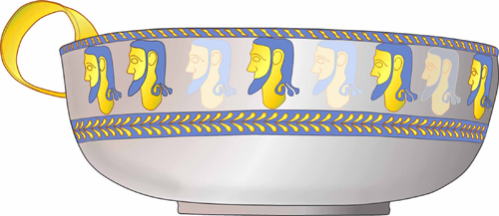 Site: Chamber Tomb 24, Kato Phournos, Mycenae Shape & Decoration: Silver Cup, gold ring-handle gold and niello inlay technique=faces of “Mycenaean Soldiers” and fine leaf pattern Era: LHII-LHIIIA1, ca. 1400 BC Museum: NAM, inv. No. 2498 / mouth diameter D165mm Local: Argolis, Peloponnese Drawing: Eiji OKUBO VIII-04 Carnelian bead Necklace 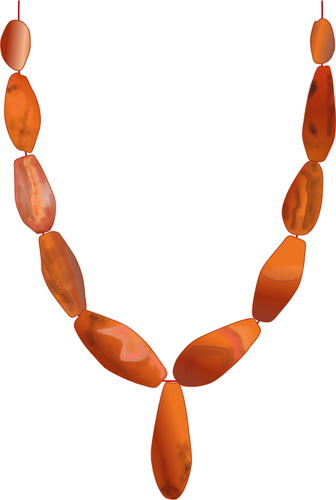 Site: Shaft Grave II, GCA, Mycenae Palace Shape & Decoration: Carnelian bead Necklace Era: MHIII, 1600-1550 BC Museum: NAM, inv. No. 110 and others Local: Argolis, Peloponnese Drawing: Eiji OKUBO VIII-23 Bronze Hairpin, Gold jar shaped, Lapis Lazuli  Site: Citadel, Nestor’s Palace Shape & Decoration: Bronze Hairpin with gold top shape like amphora jar, lapis-lazuli in cloisonné Era: LHIIIA-LHIIIB, 1400-1200 BC Museum: NAM, inv. No. 7776 / L45mm Local: Messenia, Peloponnese Drawing: Eiji OKUBO ---------- |